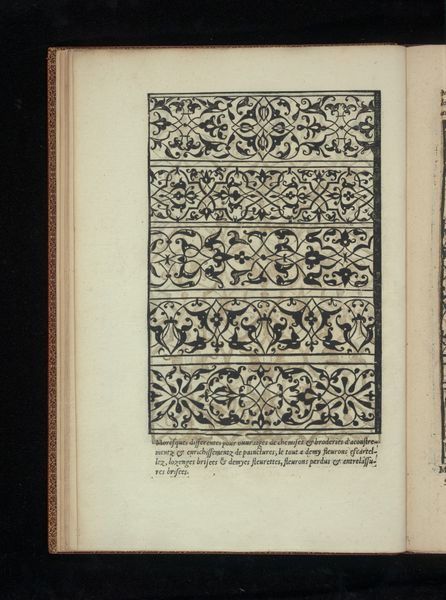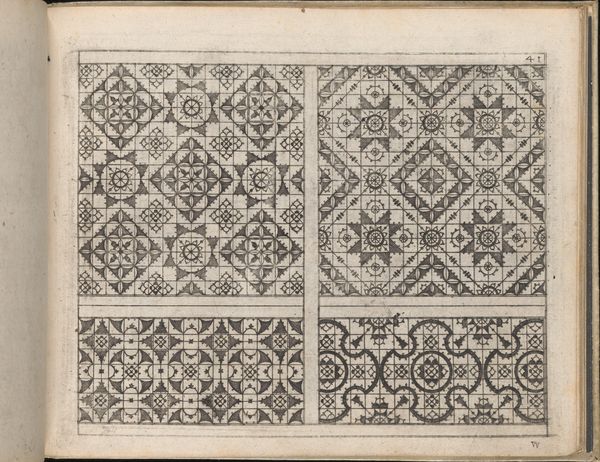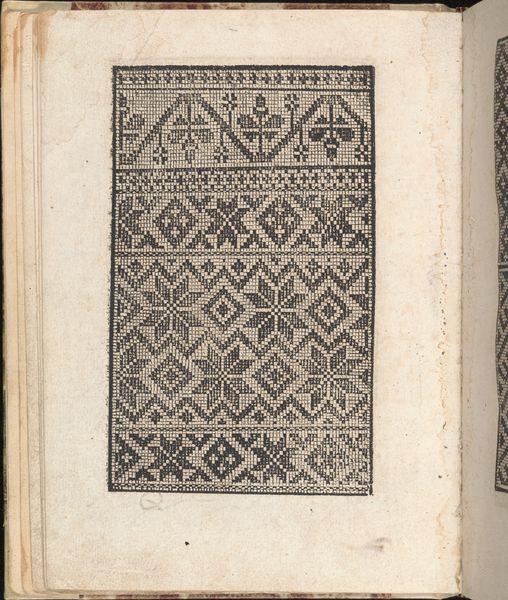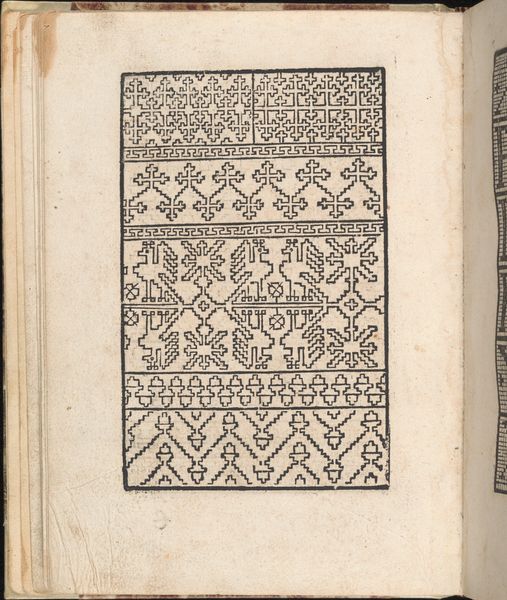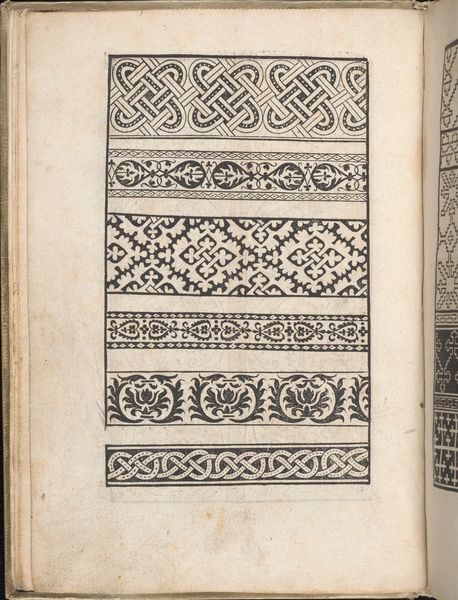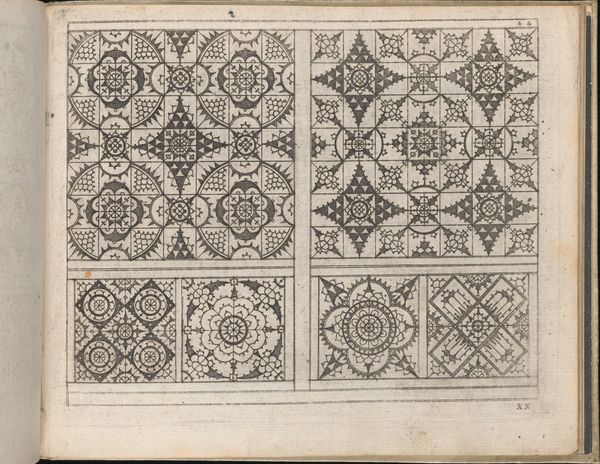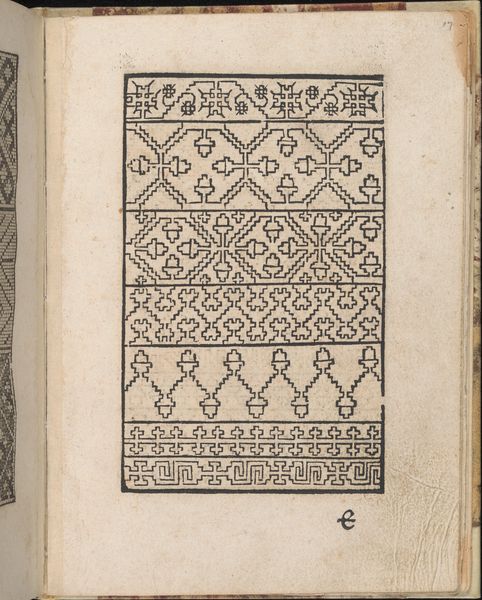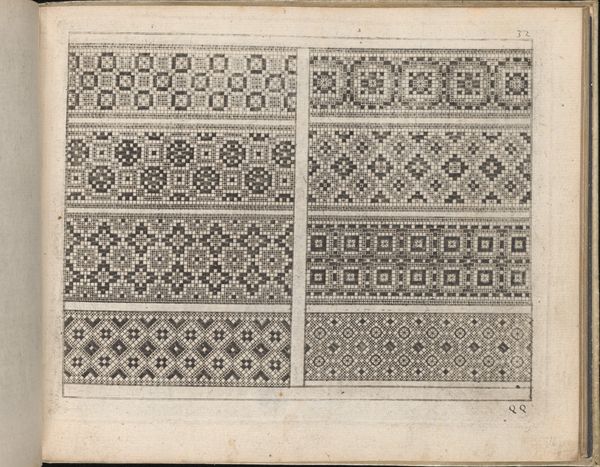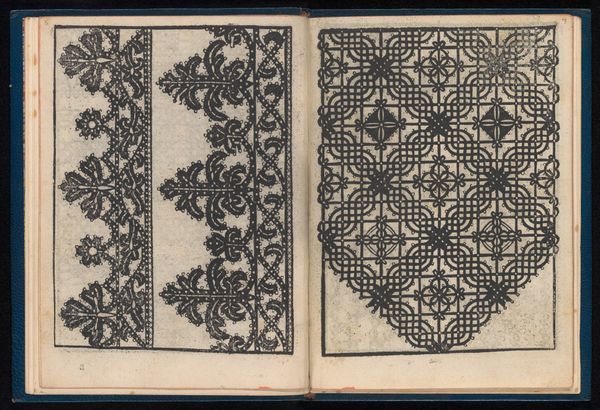
drawing, graphic-art, ornament, print, paper, ink
#
drawing
#
graphic-art
#
ornament
#
pen drawing
# print
#
paper
#
ink
#
geometric
Dimensions: Overall: 12 x 8 5/16 x 1/4 in. (30.5 x 21.1 x 0.7 cm)
Copyright: Public Domain
Here we have Francesco di Pellegrino’s "Livre de Moresques," a 16th-century pattern book, filled with Moorish designs intended for a variety of artisans. These aren't simply pretty pictures; they speak to a complex cultural exchange. The "Moresque" style, derived from the artistic traditions of North African Moors, had become fashionable in Europe, reflecting a dance between cultures and power dynamics. For artists like di Pellegrino, these patterns offered an opportunity to participate in a broader visual culture. The patterns could adorn the clothing of wealthy women, the walls of palaces, or even the bindings of books. Consider the implications of adopting and adapting these designs, and the identities and histories which are interwoven in them. How did the European appropriation of Moorish motifs shape perceptions of identity, and contribute to the construction of a visual language that continues to resonate today?
Comments
No comments
Be the first to comment and join the conversation on the ultimate creative platform.
